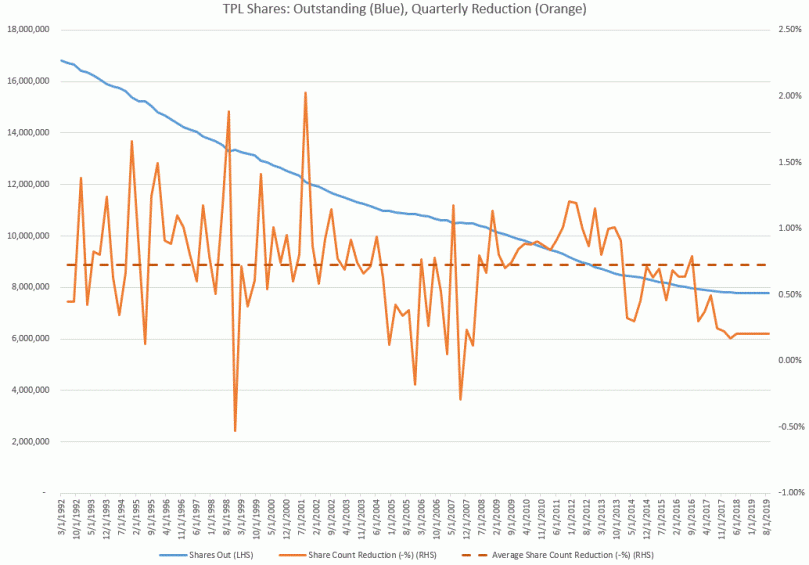Both the WSJ and Bloomberg have run articles this year about the power (or lack thereof) of earnings blackouts. Both suggest that stock prices can get weak when companies are prevented from purchasing their own stock due to prudence around the possibility (or perception) of trading on insider information.
An astute TPL investor would conclude that buyback blackouts are a big deal for TPL since, well, buybacks are its core competency.
I’m not a statistician, nor do I play one on TV but it does appear to me as if the lack of buybacks is a material driver in month to month price action. Below is the simple average monthly return of all monthly periods since July 1980. YTD October 2018 at -8.99% is included as a full month in this analysis.
Note that “blackout” months (my assumption) are highlighted in red and represent 2 of the 4 lowest monthly average returns and 4 of the 6 lowest average monthly returns. If you consider December a throwaway month (tax planning), the blackout effect gets even stronger.
On the flipside, you really want to own TPL in Feb, May, Aug, and Nov which are the months TPL reports prior quarter earnings. Reporting is typically very early in the month. I assume TPL comes out guns blazing after that to do its buying.

Source: Bloomberg
